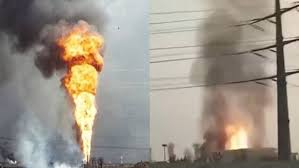Israeli strikes in Iran: Like Ukraine’s attack on Russian bases, drones add new dimension & upend established battlefield strategies

In recent months, Israel’s use of drones in its strikes on Iranian territory has signaled a significant shift in the dynamics of modern warfare. Much like Ukraine’s bold drone attacks on Russian military installations, these operations are reshaping how state actors approach long-range assaults and defense preparedness. The rise of unmanned aerial vehicles (UAVs) is not just about technological innovation — it represents a transformation in strategic doctrine, deterrence, and battlefield reach.
The Evolving Conflict: Israel’s Stealth Strikes Inside Iran
While Israel and Iran have been engaged in a long-standing shadow war, the recent escalation involving drone strikes deep within Iranian territory marks a notable departure from previous tactics. Israel has historically preferred covert operations, cyber warfare, and proxy confrontations to address its concerns about Iran’s nuclear ambitions and regional influence. However, the April and May 2025 drone strikes, reportedly targeting military sites and infrastructure linked to Iran’s drone and missile programs, suggest a new chapter.
Although Israel has not officially claimed responsibility, the precision, scale, and intelligence behind these strikes point clearly toward its involvement. The targets were high-value, and their successful destruction sends a strategic message: distance no longer offers protection.
Parallels with Ukraine’s Drone Warfare Against Russia
Ukraine’s ongoing conflict with Russia has provided a modern blueprint for asymmetric drone warfare. Despite its comparatively limited resources, Ukraine has used domestically modified drones and Western-supplied technology to strike deep into Russian-held territory — even targeting airbases, oil refineries, and logistics hubs far from the front lines.
This tactic has allowed Ukraine to disrupt Russian operations, sap morale, and force Moscow to stretch its air defense systems over thousands of kilometers. Israel, with far more sophisticated technology and intelligence-gathering capabilities, appears to be implementing a similar strategy: using drones to strike the Iranian homeland, degrade military capacity, and assert psychological dominance without deploying troops.
Why Drones Are Changing the Battlefield
The use of drones — from small commercial quadcopters to advanced military UAVs — is altering the battlefield in profound ways:
- Low Cost, High Impact: Drones are relatively inexpensive compared to fighter jets or missiles. This allows countries to conduct frequent, targeted strikes without incurring enormous costs.
- Stealth and Surprise: Many drones fly low and slow, making them difficult to detect with traditional radar. This allows attackers to evade defenses and catch adversaries off guard.
- Remote Warfare: Operators can launch attacks from far behind the front lines, reducing the risk to human life and enabling strikes in politically sensitive or inaccessible areas.
- Strategic Disruption: As seen in both Ukraine and Israel’s recent operations, drones can disable critical infrastructure, air defense systems, and supply chains — weakening the enemy’s long-term capabilities.
Iran’s Response and Regional Implications
Iran has downplayed the impact of the strikes, claiming to have intercepted several UAVs and minimized damage. However, satellite imagery and leaked intelligence suggest otherwise. The Iranian leadership now faces mounting pressure to bolster its air defenses, protect strategic assets, and potentially retaliate — increasing the risk of further escalation.
The strikes also complicate the regional security calculus. Gulf countries like Saudi Arabia and the UAE — who have long been wary of Iran’s drone programs — are watching closely. Meanwhile, Hezbollah and other Iranian-backed groups may respond with increased aggression, potentially opening new fronts.
The New Face of Deterrence
Both Israel and Ukraine’s drone operations show that deterrence no longer depends solely on conventional military strength. Instead, it hinges on agility, innovation, and the ability to strike unexpectedly. By demonstrating that they can reach into their adversaries’ heartlands, these nations challenge long-held assumptions about territorial security.
This shift is particularly significant for Israel, whose doctrine of preemptive self-defense has historically relied on fast-moving airstrikes and intelligence-led assassinations. The expanded use of drones adds a new layer: sustained psychological pressure and infrastructural disruption without direct confrontation.
Lessons for the World’s Militaries
As conflicts in the Middle East and Eastern Europe continue, defense analysts around the world are taking note. Countries like the United States, China, Turkey, and India are all investing heavily in UAV programs — not just for surveillance, but for offensive operations.
The democratization of drone warfare means that non-state actors and smaller nations can also wield strategic power previously reserved for global superpowers. With drones capable of carrying explosives, conducting reconnaissance, and disrupting electronic systems, the battlefield is no longer bound by frontlines.
Conclusion
The Israeli drone strikes inside Iran and Ukraine’s continuing drone campaign against Russia mark a turning point in 21st-century conflict. These attacks demonstrate that in modern warfare, speed, adaptability, and reach matter more than sheer size. Drones have upended traditional strategies, making even the most fortified territories vulnerable.
As technology evolves and tactics adapt, global leaders must reckon with a new reality: the skies are no longer safe — and the war of tomorrow may already be flying overhead today.






